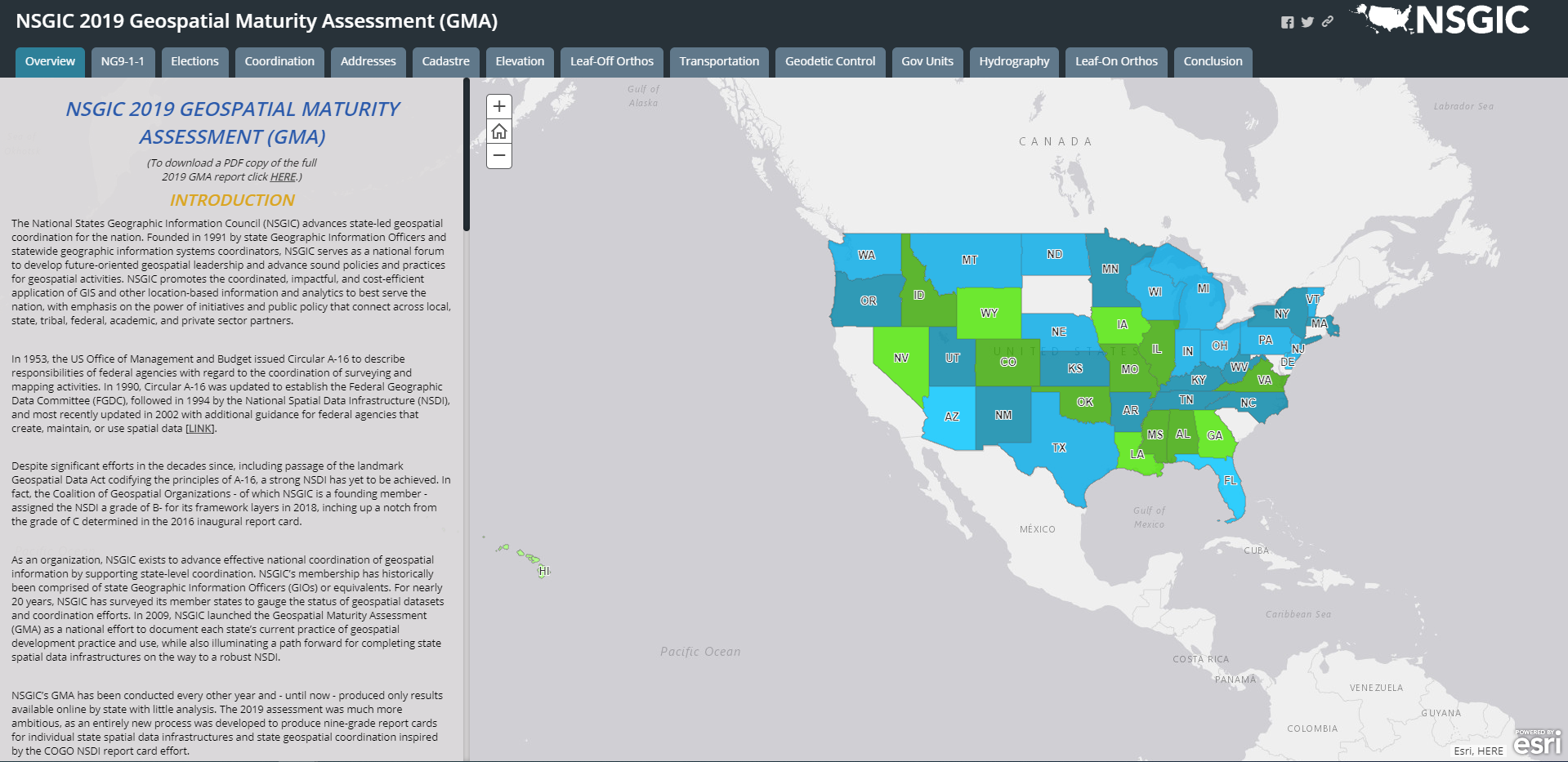2019 NSGIC Geospatial Maturity AssessmentThe NSGIC Geospatial Maturity Assessment (GMA) provides NSGIC members, sponsors, and other partners with a summary of geospatial initiatives, capabilities, and issues within and across state governments. This information is intended to assist state governments with setting goals, identifying peer states for collaboration, identifying areas requiring attention, and connecting with opportunities and resources. Completing the GMA also offers state governments a chance to reflect on their geospatial strategy, operations, and progress. The assessment is performed every two years. The current assessment results were obtained in the second half of 2019. In the links that follow, participating states' report cards can be found. Please reference the full report for more information on methodology, grading schemes, and national trends.
2019 Geospatial Maturity Assessment Full Report 2019 Geospatial Maturity Assessment State Report Cards
The NSGIC 2019 Geospatial Maturity Assessment (GMA) DashboardIn addition to the 2019 GMA report, the state report cards, and each state’s response, NSGIC has also published the results in an interactive geospatial web map application with dashboards that have been customized for each theme. The dashboards allow users to take a deeper dive into the results, interacting with individual state and collective national results bringing to life the visual patterns and trends in the data. For best performance, click the image above to open the NSGIC 2019 Geospatial Maturity Assessment (GMA) Dashboard in a separate tab. To assist individuals in their successful use of the NSGIC 2019 Geospatial Maturity Assessment (GMA) Dashboard, a help tutorial has been created to show how to navigate and use the interactive geospatial web map application. Click here to access and review the help tutorial.
NSGIC Best Practices for State Geospatial MaturityGrowing from the 2019 Geospatial Maturity Assessment, the NSGIC best practices series compiles best practices collected from “honor roll” states based on individual GMA report cards. In addition to addresses, released in June of 2020, the series will cover statewide coordination, NG9-1-1 data, and transportation data in 2020, and cadastre data, hydrography data, elevation data, and orthoimagery data in 2021.
For more information about the GMA, contact NSGIC Director of Programs Jamie Chesser.
|

